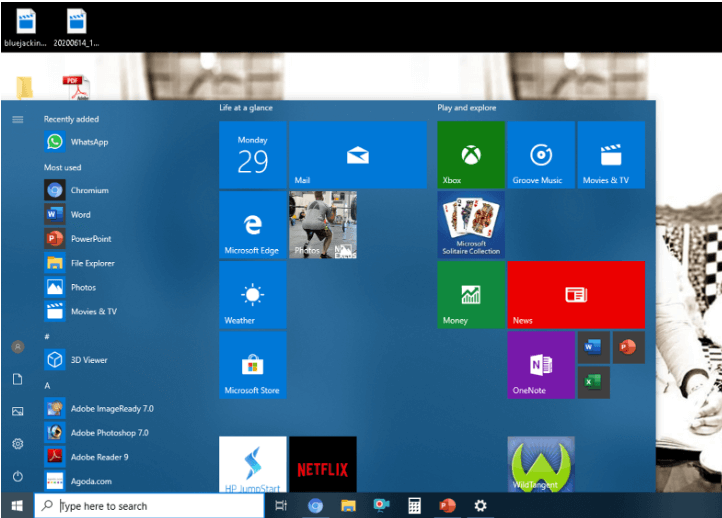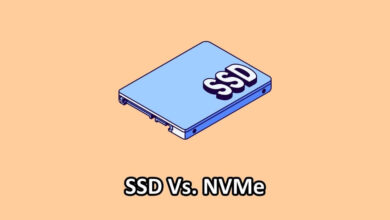Windows and Web Applications : Concepts and Differences (With Table)
In today’s technology-driven world, applications play a crucial role in making our lives easier. There are two types of applications, i.e., Windows and web applications. In this article, we will get to understand the complete difference between Windows and web applications with the help of a table and key points. Also, we are going to explore their definitions and other concepts.
Windows and Web Applications (Table)
| Windows Application | Web Application |
|---|---|
| Windows application refers to a program that is written to run under the Microsoft Windows operating system. | A web application (web app) is a software or application program that is installed on a remote server and delivered over the internet via a browser interface. |
| It is installed locally on the computer and is installed on the Windows platforms. | It does not require installation and it is installed on the server. |
| A Windows application is accessible only from the system it is installed in. | Web applications are accessible from any device with an internet connection. |
| It requires the Microsoft Windows operating system. | The web application does not require a specific operating system. |
| Its updates are installed manually. | Its updates are automatically done and maintained on the server. |
| A Windows app’s data is stored locally on the computer. | Its data is stored on remote servers or in the cloud. |
| It is specific to bit. This means that if it is developed for a 32-bit operating system, it will not work with a 64-bit operating system. | The web application, on the other hand, is independent of any type of system. |
| Examples of Windows applications include Microsoft Office apps or software, Photoshop, Skype, Windows file explorer, etc. | Examples of web applications include Chrome, Firefox, Internet Explorer, Social networks, eCommerce websites, etc. |
- Difference Between Web Browsers and Search Engines
- Difference Between Programming and Coding
- Difference Between Blogging and Vlogging
What is Windows Application?
A Windows application is a type of software that is designed to run on the Microsoft Windows operating system. These applications are installed and run on a computer running Windows and are typically created using programming languages such as C++, C#, or Visual Basic. Some common examples of Windows applications include Microsoft Office applications, skype, adobe photoshop, illustrator, windows file explorer, etc.
These applications have a graphical user interface (GUI) that allows users to interact with the software using mouse clicks and keyboard input, rather than typing commands in a command line interface.
Moreover, These applications are installed locally on a computer and can only be used when the computer is running. Windows applications are designed to be used by a single person at a time and do not require an internet connection to run.

What is a Web Application?
A web application, on the other hand, is a software application that is accessed over the internet through a web browser. Unlike traditional desktop applications, which are installed on a single computer, web applications are hosted on a remote server and can be accessed from any device with an internet connection and a web browser. Web applications are typically built using programming languages such as HTML, CSS, JavaScript, and server-side technologies such as PHP, Ruby on Rails, or Java.
Also, they often use a client-server architecture, where the client (the web browser) sends requests to the server for data or processing, and the server returns the requested information to the client for display. Some common examples of web applications include Chrome, Firefox, Internet Explorer, Social networks, eCommerce websites, etc.
5 Key Differences between Windows and Web Applications
While comparing Windows vs Web Applications, here we have mentioned some of the key differences between Windows and web applications.
- Installation process: The most significant difference between a Windows application and a web application is the installation process. Windows applications require an installation process, whereas web applications do not.
- Accessibility: Windows applications can only be used when the computer is running, and they are designed for single-user use. Web applications, on the other hand, can be accessed from any computer with an internet connection and can be used by multiple people at the same time.
- Operating System: Windows applications require a Microsoft Windows operating system. On the other hand, web applications do not require a specific operating system.
- Internet Connection: Windows applications do not require an internet connection to run. On the other hand, web applications require an internet connection to run.
- Updating and Maintenance: Updating and maintenance are much easier for web applications as compared to Windows applications. In the case of Windows applications, the user has to download and install the updates. In Contrast, in the case of web applications, the updates are automatically installed on the server, and the user does not have to do anything.
The following table shows the difference between Windows and Web Applications side by side.

Conclusion
So, in conclusion, both Windows applications and web applications have their own uses and benefits. The choice between them depends on the requirements of the users. Windows applications are ideal for users who need to use the application offline. On the contrary, web applications are ideal for users who need to access the application from multiple computers and require an internet connection. Both types of applications have their own unique features, and the choice between them should be based on the specific requirements of the users.
Reference Blog:




One Comment